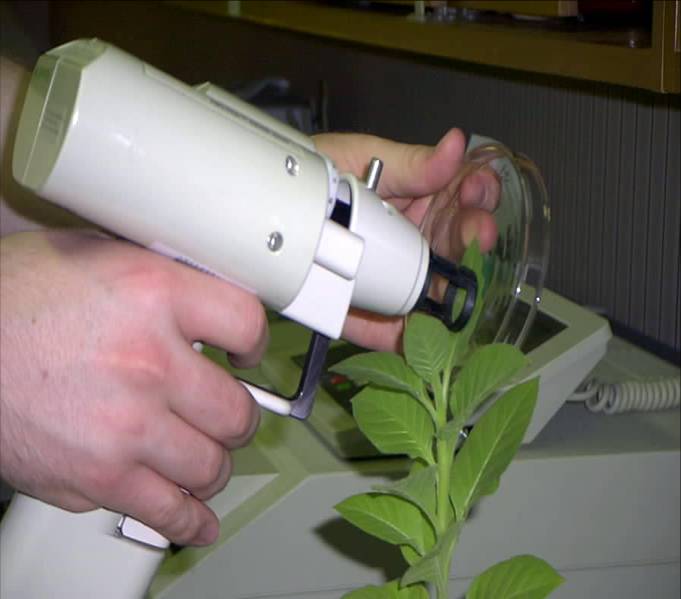
| What exactly is Genetic Modification? |
Genetic Modification is a crude method of inserting and removing pieces of genetic material from one species to another possibly totally unrelated species, something that NEVER occurs naturally. How is this done? There are three common methods of genetic engineering: the plasmid method, the vector method, and the biolistic (gene gun) method. The most well known of the three is the plasmid method, which is generally used for altering microorganisms such as bacteria. The vector method is similar to the plasmid method, but its products are inserted directly into the genome via a viral vector. The third method is the biolistic method which will be studied in detail below. For more detailed explanations of the plasmid and vector methods of genetic engineering, visit ThinkQuest
The Gene Gun method: How the Gene Gun Works: The gene gun is part of a method called the biolistic (also known as bioballistic) method, and under certain conditions, DNA (or RNA) become “sticky,” adhering to biologically inert particles such as metal atoms (usually tungsten or gold). By accelerating this DNA-particle complex in a partial vacuum and placing the target tissue within the acceleration path, DNA is effectively introduced (Gan, 1989). Uncoated metal particles could also be shot through a solution containing DNA surrounding the cell thus picking up the genetic material and proceeding into the living cell. A perforated plate stops the shell cartridge but allows the slivers of metal to pass through and into the living cells on the other side. The cells that take up the desired DNA, identified through the use of a marker gene are then cultured to replicate the gene and possibly cloned. The biolistic method is mostly used for inserting genes into plant cells such as pesticide or herbicide resistance. Different methods have been used to accelerate the particles: these include pneumatic devices; instruments utilizing a mechanical impulse or macroprojectile; centripetal, magnetic or electrostatic forces; spray or vaccination guns; and apparatus based on acceleration by shock wave, such as electric discharge (Christou and McCabe, 1992).
|
